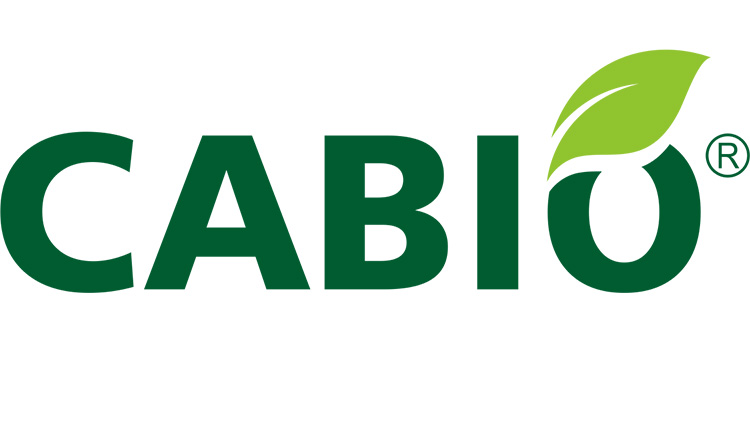Promotional Features
N-acetylneuraminic acid keeps skin looking healthy and revitalized
N-acetylneuraminic acid is a new ingredient that can satisfy consumer demand for natural and safety; it can eliminate the active oxygen free radicals produced in the human body to play an anti-oxidant and protective role.
The size of the global skincare market is nearly $140 billion, with a compound growth rate of about 4.5% in the past five years, showing a steady growth trend as a whole—an increasing health awareness from consumers on cosmetics and skincare ingredients.
Take a peek at some of the buzziest beauty products that have launched in the last few months, categorized differently but with a single word in common: fermented. Though fermented ingredients in skincare are hardly a new concept, they hit the aisles hard in 2021. And the reason, according to dermatologists, is that we're learning just how beneficial these formulas can be for the health of our skin microbiome [1].
Primary skincare can no longer meet consumers' requests, and advanced functions such as whitening, brightening, firming and anti-aging, and anti-oxidation have attracted more attention. The new skincare shopper is ingredient savvy and, more often than not, will choose a product based on the ingredients list and the brand's purpose over what marketing tells them is good [2].
Fermentation-derived ingredients are pretty popular in cosmetics, such as ferment filtrate, ferment lysate, and ferment extract, which are used in many mainstream brands of cosmetics. They have an excellent effect on anti-wrinkle, firming, anti-oxidation, and maintaining the skin microbiome. Since these ingredients are all mixtures, amino acids, peptides, enzymes, and other substances play influential roles. Now, there is a single ingredient derived from fermentation, which shows a significant skincare effect. N-acetylneuraminic acid (NANA), called sialic acid (SA), is fermented with natural properties that consumers love.
N-acetylneuraminic acid is a new ingredient that can satisfy consumer demand for natural and safety. It exists widely in nature, and the human body also contains a large amount of this substance, mainly in the form of glycoprotein, glycolipid, and other combined forms. In humans, N-acetylneuraminic acid is abundantly distributed at the ends of sugar chains on the surface of cell membranes [3, 4] and is particularly abundant on the surface of nerve cells [5]. It can also be combined with lipids or proteins to play different functions [6]. As it's an essential component of biological membranes, most of which are connected with membrane proteins and distributed on the surface of the plasma membrane to form a layer of polysaccharide-protein complexes. The negatively charged surface of SA is a core carrier in information transmission, so sialic acid is called the antenna on the cell surface, helping to improve cell activity.
What's more, SA can eliminate the active oxygen free radicals produced in the human body to play an anti-oxidant and protective role. The lack of sialic acid will reduce blood cell life and enzyme protein in metabolism, which will lead to the senescence of cells. The aging of cells will make people show an aging state. Thus, SA is potentially developed into the next new functional ingredient for skincare.
CABIO did some studies to verify the efficacy of N-acetylneuraminic acid. Skin darkening and age spots due to lipid peroxidation and non-enzymatic glycosylation. We tested the ability of subjects to inhibit AGEs production by simulating non-enzymatic glycation processes in vitro and evaluated the potential anti-aging and anti-melanin effects of N-acetylneuraminic acid. Based on studies, N-acetylneuraminic acid’s inhibitory effect on non-enzymatic glycosylation showed potential anti-aging and anti-melanin function. In keratinocyte experiments, the content of reactive oxygen species (ROS) in keratinocytes treated with N-acetylneuraminic acid decreased significantly compared with the negative control group. In fibroblast experiments, the collagen I was increased after applying N-acetylneuraminic acid. Thus, the cell experimental results prove that N-acetylneuraminic acid has obvious anti-oxidation, firming, and anti-wrinkle benefits. Human experiments found that the wrinkle area, skin firmness, and skin elasticity of subjects treated with the NANA essence were significantly improved, while those in the non-NANA group were not. The results further confirm that it has an effect on anti-wrinkle, firming, and anti-oxidation.
Through research on the international and domestic markets, N-acetylneuraminic acid has already been widely used in skincare products these years. N-acetylneuraminic acid has been included in cosmetic regulations in INCI of US and Cosing of EU. It already has many applications like the Taiwan NeoStrata UNITEC series, Japan SIALO Essence, Japan RICH LAMELLA Beauty liquid, and CHANDOS Sialic Acid Ageing Cream Mask.
With more than ten years of technical development and financial input, CABIO has promoted the production and content of SA in Escherichia coli to an industrial scale, thus becoming the first supplier in China to achieve mass production of SA. Our sialic acid is high purity and has a large capacity. Our sialic acid is produced by advanced fermentation technology. We obtain the strain after separation, screening, mutagenesis, and other processes, and the strains are preserved in the China Center for Type Culture Collection. We use advanced fermentation technology to add appropriate carbon and nitrogen sources as nutrients for the bacteria and use a small number of trace elements to regulate the growth of the bacteria. Through aerobic and high-density fermentation, the bacterial cells are obtained. Then a high-purity single product is purified through the steps of filtration, sterilization, hydrolysis, purification, drying, grinding, and sieving. The finished product is of natural origin, with more than 98% purity.
CABIO provides customers with high-quality cosmetic ingredients, functional food ingredients, and other products by ion beam biotechnology, microbial breeding, fermentation engineering, synthetic biology, and other technical means. CABIO is a biotechnology-based company that combines targeted optimization of industrial strains, precisely regulated fermentation, and efficient separation and purification.
With biotechnology as our pillar, CABIO provides customers from the nutrition and health industry worldwide with quality nutrient products and innovative solutions through sustainable microorganism fermentation. CABIO has already cooporated with Cargill, Nestle, Danone, Abbott, Kerry, Givaudan, Feihe, Junlebao, Yili, By-Health H&H Group, Angel Yeast, et cetera.
1. https://www.wellandgood.com/fermented-skin-care/
2. https://www.scmp.com/lifestyle/fashion-beauty/article/3161233/top-beauty-ingredients-2022-new-retinol-and-hyaluronic
3. Schauer, R., Achievements and Challenges of Sialic Acid Research. Glycoconjugate Journal, 2000. 17(7/9): p. 485-499.
4. Varki, T.A.a.A., Chemical Diversity in the Sialic Acids and Related r-Keto Acids: An Evolutionary Perspective. Chem. Rev., 2002. 102: p. 439−469.
5. Muhlenhoff, M., et al., Polysialic acid: versatile modification of NCAM, SynCAM 1 and neuropilin-2. Neurochem Res, 2013. 38(6): p. 1134-43.
6. Schauer, R., Sialic acids as regulators of molecular and cellular interactions. CurrOpinStructBiol, 2009. 19(5): p. 507-14.






